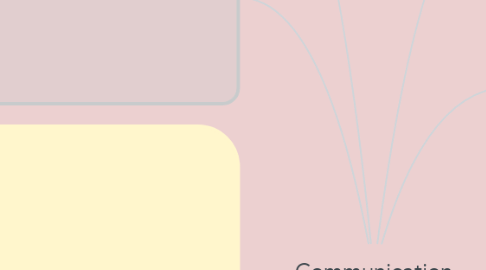Communication
by marisol chuquin

1. Receiver: is the one who receives the message and interprets it.
2. It is the process of transmission and reception of ideas, information and messages
2.1. The act of communicating is a complex process in which two or more people are related and, through an exchange of messages with similar codes.
3. Types of communication
3.1. 1
3.1.1. 1.1 Verbal communication
3.1.2. Verbal communication refers to the words used and the inflections of the voice (tone of voice).
3.1.3. 1.2 Non-verbal communication
3.1.4. Non-verbal communication refers to a large number of channels, among which the most important could be cited eye contact, facial gestures, arm and hand movements or posture and body distance.
4. Comunication element
4.1. Emitter: is the one that issues the message.
4.2. Message: is the information that you want to transmit.
4.3. Channel: it is the medium through which the message is transmitted.
4.4. Code: Set of signs and rules that, forming a language, help encode the message.
4.5. Context: Set of circumstances (place, time, mood of the interlocutors, etc.) that exist at the time of the Com
5. The socio-psychological components of communication
5.1. Communicative component: appreciates communication as an exchange of information.
5.2. Perceptual component: includes interpersonal perception as a variant of man's perception by man
5.3. Interactive component: the organization of joint actions that favor the performance of group activities, common to all members
6. Communication functions
6.1. Informational function: when its purpose is to share more or less objective or referential information, that is, to describe an aspect of reality.
6.2. Training function: when it is proposed to influence the recipient's mind for pedagogical, training or teaching purposes, transmitting habits.
6.3. Persuasive function: when you seek to convince the interlocutor to adopt a point of view.
6.4. Expressive function: when subjective, emotional or emotional content of the issuer is transmitted.
7. Some aspects that improve communication
7.1. Do not accumulate negative emotions without communicating them.
7.2. Be specific.
7.3. Avoid generalizations.
7.4. Be brief.
7.5. Choose the right time and place.
8. Characteristics of communication
8.1. Broadly speaking, communication is characterized by the following:
8.2. It is a process of information exchange, which occurs between living beings
8.3. Throughout the communication process, different instances called "elements of communication" are involved.
8.4. It generally occurs cyclically, that is, it feeds back, although it can also be unidirectional.
8.5. It may have very different general purposes, but it is almost always about eliciting a desired response from the caller or callers.


